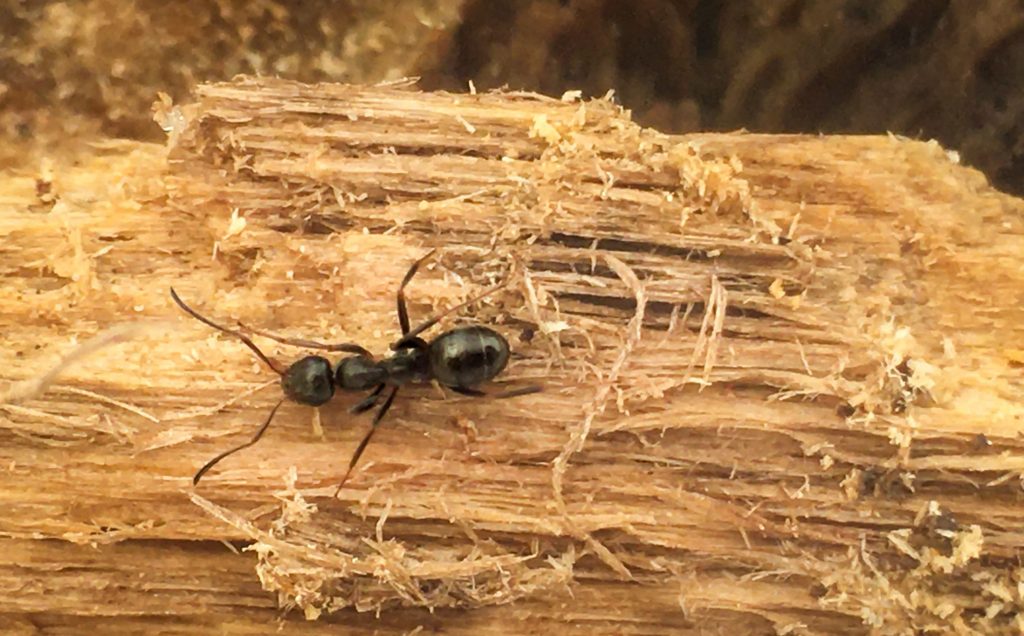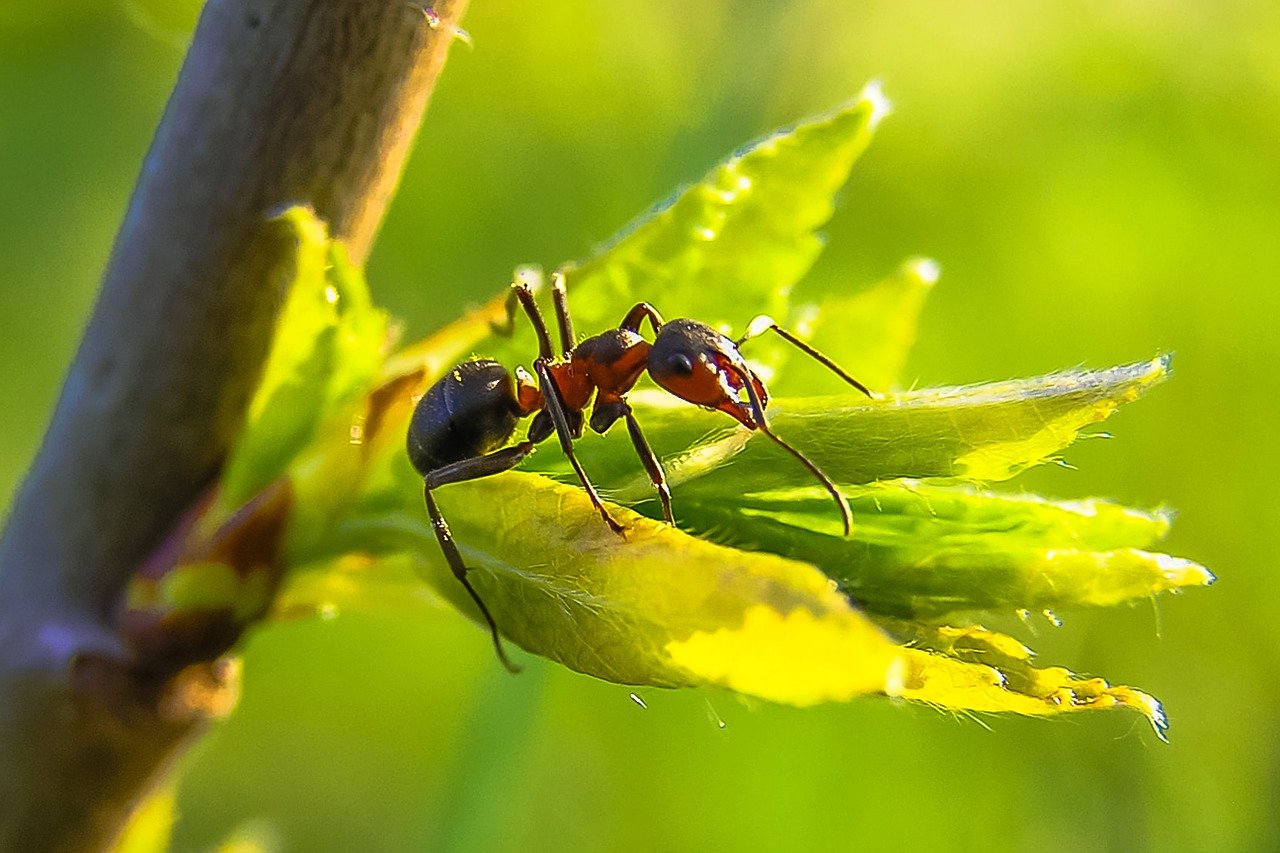Have you ever been stung by an ant? Ant stings are very painful and can cause several irritating sensations around the wound. But do all species of ants sting? There are around a thousand different species of ants living on this planet. Ants belong to a type of specimen called Hymenoptera, which is similar to bees and wasps. Female ants have the ability to sting by a special function in their abdomen.
All ant species can bite and sting humans. Some of these species spray toxic chemicals along the wound but many of them are unnoticeable. But why do ants sting others in the first place?
Why Do Ants Sting?
There are two common reasons why ants would sting others. The first reason ants sting is because they want to protect their ant colony and the anthill. Whenever they feel threatened by a creature, ants will not hesitate to sting the would-be predator and make sure that the lives of the colony are intact.
Since ant hills are not that recognizable in outdoor situations, people tend to threaten the lives of ants by either accidentally stepping on the ant hill in their yard, people having a picnic laying their blankets on top of an anthill, or near their food paths. Once these happen, expect a swarm of ants to do their best to sting you and your companions.
The second reason why ants sting is because they are hunting for food. As predators, ants use their sting to immobilize their prey so they can easily consume them.
Now that we know the main reasons why ants sting, it is important to know which types of ants sting you and how can you differentiate the type of stings so you will know how to treat them. Here are some of those ant types:

Fire Ants
Fire Ants are one of the most infamous ant types that sting. You can immediately identify a fire ant by its bright, red exterior.
The first species of Fire Ants were unintentionally shipped from Brazil to North America in the 1930s. Mostly left on their own, Fire Ants multiplied and spread across the continent for years, appearing as far as southern California in the United States. These imported Fire Ants are very aggressive when threatened. A Fire Ant will lock up its prey using its clawlike mouth. Once they feel that their prey is securely in their grasp, they will inject their venom using its stinger. Fire Ants will normally sting their prey multiple times until the victim passes away.
How To Identify A Fire Ant Sting?
You will know a fire ant stings when you feel a burning sensation in the part where the fire ant stings you. The first sting is normally followed by multiple succeeding stings coming from other fire ants as they attack in numbers. Each fire ant stings multiple times if you don’t act fast and remove them from your skin. If a fire ant stings repeatedly enough, it will sometimes form a small, semi-circular pattern along its path.
The wound of a fire ant sting can be identified by appearing as a red-colored lump on your skin that becomes blistering over time. Various people will display different symptoms based on their sensitivity, allergies, and the number of fire ant bites that happened.
Symptoms Of Fire Ant Stings
The effects of fire ant sting mostly start with developing very irritating lumps in your skin. These lumps tend to dissipate within the first hour but will turn into blisters after about four hours, After 24 hours, these blisters tend to have a pus-like substance inside of them. They tend to leave scars after healing.
People with heightened sensitivity to fire ant bites can develop worse symptoms like vomiting, stomach cramps, tightness in their chest, difficulty in breathing, swelling of the tongue, sore throat, and a myriad of other illnesses.
It is recommended to seek medical help immediately when a fire ant stings you.
Other less common types of ants that sting you include:

Carpenter Ants
Carpenter Ants are mostly black ants that normally tunnel through wood and build their homes inside. This can damage property if you do not consider an ant removal company in Vaughan. These types of ants rarely sting people but Carpenter Ants will not hesitate to harm you if they feel threatened.
The stings from Carpenter Ants are harmless compared to Fire Ants, which causes a lot of irritation and illnesses if left untreated. Carpenter Ant stings are mildly irritating but they should pass within the hour even if no treatment is applied. On some occasions, Carpenter Ant stings might develop into allergic reactions. For such cases, it is recommended to apply basic first aid to provide relief.
How to Remove Carpenter Ants From Your Vicinity
If left unchecked, Carpenter Ants will multiply at a staggering rate and will cause a lot of problems due to their bites that can damage your skin as well as your home. Carpenter Ants are attracted to moist woody areas with fungus growing inside the wood. Places with extreme moisture from rainfall, pipeline leaks, and pools may attract more Carpenter Ants.
Make sure that all unused lumber is removed from the vicinity. Monitor the sides of your home and surroundings to make sure that no sources of moisture are present or growing.

Harvester Ants
Harvester Ants are ant species that collect or gather seeds, which is their primary source of food. These are ant types that sting humans and are a menace to society because of their tendency to harm vegetation near their nests causing unexpected damage in your home garden without proper control.
Worker harvester ants are about 1 and ½ to 2 inches long. Their exterior colors range from black to brown, and there are some harvester ants that are colored red. Harvester Ants tend to build colonies in bare soil areas that are near to vegetation or shrubs.
How to Identify Harvester Ant Stings?
The stings of Harvester Ants can be identified by irritating sores and slight allergic reactions to the stung part. The stinging process begins with the Harvester Ant biting the victim to make sure that it does not escape its grasp. Once the victim is secured, the harvester ant will repeatedly sting and inject venom to the location. These types of ants are also known to bite and sting a victim multiple times.
Harvester Ants are not as aggressive as Fire Ants, but these types of ants will sting you if their nest is threatened. This is why it is better to get rid of these ants first with professional ant control services in Toronto. These ants are known as one of the most venomous insects in the world. They have the most potent venom among genus ant types. Effects of Harvester Ant venom can last from 4 hours up to 12 hours. The pain from the sting of this ant type gets worse the longer the duration and the pain spreads from the wound to the other parts of the body. The wounded area will also sweat a lot.
Take note that only the female Harvester Ant can do the stinging. Male Harvester Ants don’t have a stinger nor do they contain venom inside their bodies.
When stung by a Harvester Ant, it is recommended to use Antihistamine to relieve the itching around the wound. Apply cold water along with aloe to the stung area to ease discomfort. Sterilize the stung part by removing the stinger but make sure not to squeeze the stinger itself as the remaining venom might seep from the stinger and into your skin. It is very important that you do not scratch the injected areas as the itching is contagious and will likely lead to more injuries and discomfort.

